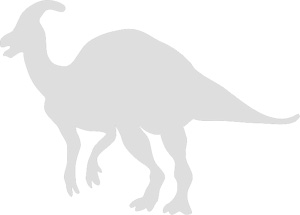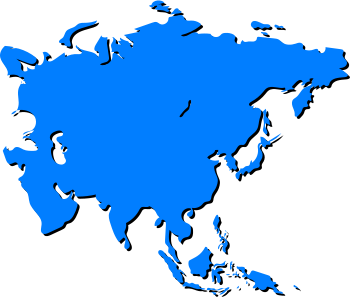Dinosaur: Amurosaurus riabinini

| Length*: | 9.5 m | 31.2 ft |
| Weight*: | 4.2 t | 9,259 lb |
*The largest known specimen
Period
Epoch: Late Cretaceous
Stage: Late Maastrichtian
Years: 72.1–66 Ma
Details
Status: valid
Author: Bolotsky & Kurzanov
Year: 1991
Distribution
Area: Asia
Country: Russia
Region: Amur
Formation: Udurchukan
Description
Amurosaurus riabinini
Amurosaurus riabinini was a lambeosaurine hadrosaurid dinosaur that lived during the Late Cretaceous (Late Maastrichtian), approximately 70 – 66 million years ago. As a crest-bearing herbivore from Far Eastern Russia, it represents one of the most complete and significant dinosaur finds from Russian territory, offering insights into hadrosaurid diversity and paleobiogeography in Asia.
Geographic Location
Location of holotype discovery: Blagoveschensk, Amur Region, Russia
Physical Characteristics
Adult individuals were approximately 8-9.5 meters long (26–31 ft), with a robust but gracile body typical of lambeosaurines. Distinctive anatomical features include:
- A tall, triangular sagittal crest on the parietal forming part of the supracranial crest.
- A sigmoidal ulna and radius.
- A curved quadrate and a prominent postorbital process.
- Dental batteries with up to 37 vertical columns in the dentary.
The skull suggests the presence of a complex, hollow crest used for visual or acoustic display, although the exact crest shape remains speculative due to incomplete preservation.
Diet and Feeding Habits
As a member of Hadrosauridae, Amurosaurus was an obligate herbivore. Its tightly packed dental batteries, with multiple replacement teeth in each position, were adapted for grinding tough plant material such as ferns, conifers, and flowering plants (angiosperms). It likely fed both at ground level and on low shrubs.
Habitat and Distribution
Amurosaurus lived in a floodplain ecosystem within the Udurchukan Formation. This environment consisted of clay-rich alluvial deposits, indicating a riverine habitat. The climate during the Maastrichtian in this region was temperate to subtropical. It shared this habitat with other dinosaurs, including hadrosaurines, theropods (e.g., tyrannosauroids), and turtles.
Behavior and Social Structure
Although direct evidence is lacking, Amurosaurus is thought to have been a social, possibly gregarious species. The mass accumulation of disarticulated individuals in the Blagoveschensk bonebed suggests herd behavior. The elaborate cranial crest may have served a social role, possibly in vocal communication or species recognition.
Discovery and Research
The species was named in 1991 by Bolotsky and Kurzanov, based on remains recovered from a large bonebed near Blagoveschensk. The holotype consists of an associated left maxilla and dentary (AEHM 1/12). Extensive material was excavated beginning in 1984, making it the most abundantly known dinosaur species in Russia.
The formal and comprehensive description was published in 2004 by Godefroit, Bolotsky, and Van Itterbeeck. The taxon is known from hundreds of bones, mostly disarticulated but well-preserved, representing both juveniles and adults.
Significance and Notable Facts
- Amurosaurus riabinini is among the best-known lambeosaurines from Asia and supports the hypothesis of an Asian origin for this group.
- The Blagoveschensk bonebed provides rare insights into taphonomy and paleoecology in Far Eastern Russia.
- It is closely related to North American genera such as Corythosaurus and Parasaurolophus, but retains primitive traits, placing it basally within Lambeosaurinae.
- The high sagittal crest on the parietal is a unique autapomorphy distinguishing it from other lambeosaurines.
Conclusion
Amurosaurus riabinini is a key taxon for understanding the evolution and biogeography of hadrosaurid dinosaurs in Late Cretaceous Asia. Its rich fossil record and unique anatomical features make it one of the most significant dinosaur discoveries in Russia, highlighting the importance of the Amur region in global paleontology.
Locations
Sources
Material: Many skeletons from Bonebed.
References: Godefroit, P., Bolotsky, Y.L., & Van Itterbeeck, J. (2004). The lambeosaurine dinosaur Amurosaurus riabinini, from the Maastrichtian of Far Eastern Russia.



